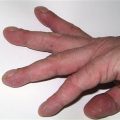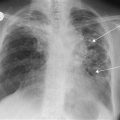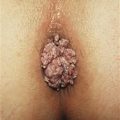Deafness
Deafness is loss of hearing and may be divided into ‘conductive’ and ‘sensorineural’ to facilitate interpretation of clinical examination.
History
Duration
Childhood deafness may be hereditary, result from maternal rubella infection or arise as a complication of childhood infection (meningitis, toxoplasma or CMV infection). The duration of symptoms may coincide with the introduction of ototoxic drugs.
Onset
Sudden onset of deafness can result from foreign bodies in the external auditory canal. Deafness usually occurs only if the foreign body perforates the tympanic membrane or disrupts the chain of ossicles. Sudden onset of deafness may also result from trauma, vascular catastrophes or Ménière’s disease. Gradual development of deafness occurs with otosclerosis, tumours and age.
Pain
Deafness associated with ear pain may be a result of otitis externa, otitis media or infection with herpes zoster. Severe pain is experienced with both direct trauma perforating the tympanic membrane and barotrauma, which can result from a slap on the ear or scuba diving.
Precipitating factors
A history of trauma is usually obvious. Sensorineural deafness can result as a complication of mumps or from prolonged exposure to high noise levels.
Associated symptoms
Tinnitus in combination with episodic deafness and vertigo occur with Ménière’s disease. When tinnitus occurs with deafness alone, consider otosclerosis, noise exposure, ototoxic drugs or acoustic neuroma.
Drug history
Offending drugs can easily be determined from a drug history.
Examination
Examination of the ear
On inspection, the vesicles of herpes zoster or presence of otitis externa may be obvious. With otitis externa, the skin appears erythematous with scaling and exudation. Tenderness will be elicited by movement of the pinna or compression of the tragus.
Otoscopic examination will identify ear wax or foreign bodies occluding the external auditory canal. With a patent ear canal, the tympanic membrane may be visualised, traumatic perforations may be seen as a tear of the tympanum accompanied with blood. Injection, erythema or frank perforation of the tympanic membrane can result from otitis media.
Assessment of hearing
Crude tests of hearing can be performed with conversational voice, whispered voice or measuring how far away from the ear the ticking of a watch can be heard.
Rinne’s test is performed with a 512-Hz tuning fork; mastoid or BC is compared with AC. AC conduction is normally better than BC. Weber’s test is performed holding the base of the struck tuning fork against the centre of the forehead. Normally, the sound is heard equally in both ears (see Table).
| Deafness | Rinne’s test | Weber’s test |
| Sensorineural | AC>BC | Heard in good ear |
| Conductive | BC>AC | Heard in deaf ear |
General examination
A complete neurological examination is performed. Nystagmus may be present with Ménière’s disease; rarely acoustic neuromas may affect the facial nerve, producing unilateral facial paralysis; and motor or sensory deficits can result from brain tumours. Examination should also include the nose and throat, as nasopharyngeal sepsis may be a factor predisposing to middle ear infection.
General Investigations
Specific Investigations
■ Speech audiometry
Impaired speech discrimination in the 50–80% range occurs with conductive deafness, and 0–50% range with sensorineural causes.
■ Electric response audiometry
Assessment of hearing in babies.
■ Impedance tympanometry
Increased impedance (reduced compliance) with otitis media with effusion.





